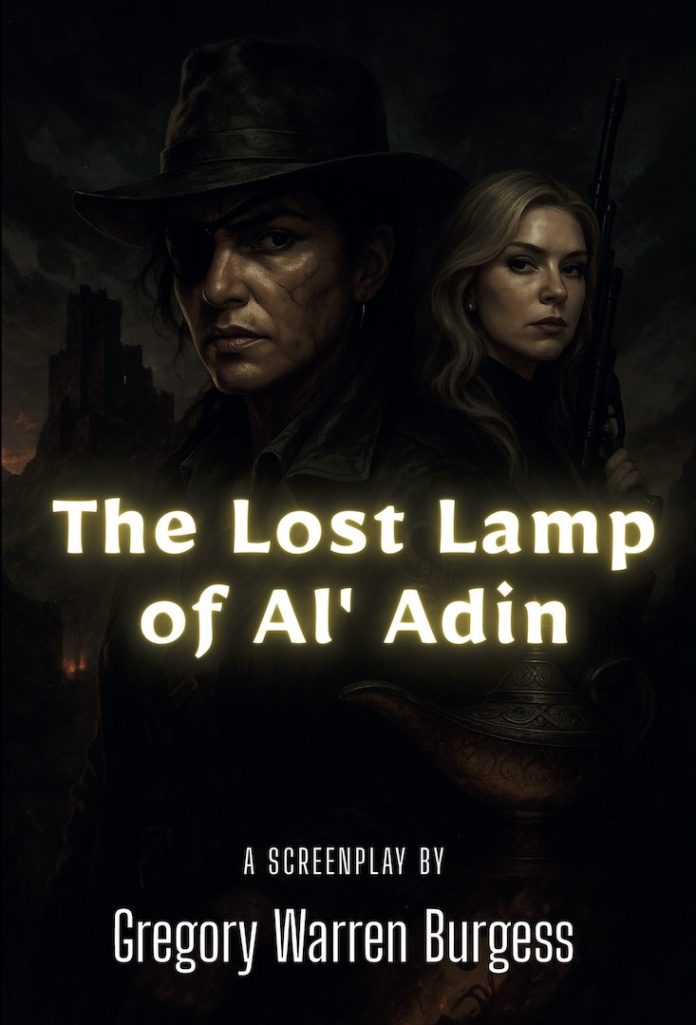Gregory Warren Burgess delivers a remarkable debut with “The Lost Lamp of Al’ Adin,” a screenplay that expertly weaves together archaeological intrigue, supernatural elements, and pulse-pounding action into a narrative that feels both timeless and refreshingly modern. This isn’t your typical treasure hunt story—Burgess has crafted something far more sophisticated, drawing from his rich background in education, public health, and world travel to create a work that resonates with authenticity and cultural depth.
Set against the backdrop of 1978’s political tensions, the story follows Tehminah Cruz, a Persian-American archaeologist whose family legacy becomes both her greatest asset and most dangerous burden. What begins as a personal quest for answers transforms into a globe-spanning adventure that challenges everything readers think they know about ancient mythology and its place in the modern world.
Character Development That Transcends Genre Conventions
The Complexity of Tehminah Cruz
Burgess has created in Tehminah Cruz a protagonist who defies the typical adventure hero archetype. Rather than the invincible archaeologist we’ve seen before, Tehminah is beautifully flawed—scarred both physically and emotionally by her past, yet driven by an unshakeable determination that makes her incredibly compelling. Her Persian-American heritage isn’t merely window dressing; it’s integral to both her identity and the story’s cultural authenticity.
The author’s decision to make Tehminah’s relationship with her family’s archaeological legacy so deeply personal adds layers of emotional weight to every discovery and revelation. Her interactions with the mysterious Dantalion, her loyalty to best friend Daisy, and her complex relationship with her family’s research create a rich tapestry of human connections that elevate the supernatural elements beyond mere spectacle.
Supporting Characters with Genuine Depth
The supporting cast shines with equal brilliance. Daisy Finch-Rose, Tehminah’s sharp-shooting companion, brings both humor and humanity to the story without falling into comic relief territory. Her relationship with Tehminah feels genuine and lived-in, built on years of shared history that Burgess reveals through natural dialogue and character interactions rather than exposition dumps.
The antagonists, particularly the Sultan and his Divine Assassins cult, are crafted with nuance that avoids one-dimensional villainy. Burgess understands that the most compelling villains believe they’re the heroes of their own stories, and this psychological complexity makes their threat feel genuinely menacing.
Worldbuilding That Honors Cultural Heritage
Authentic Historical and Cultural Details
One of the screenplay’s greatest strengths lies in Burgess’s meticulous attention to cultural and historical detail. His background in international education and travel clearly informs the authentic portrayal of Middle Eastern archaeology and Persian cultural elements. The Fire Temple of Mithra-Din isn’t just a convenient mystical location—it’s grounded in real historical context that gives weight to the supernatural elements.
The author’s respect for Persian culture shines through in every scene set in Iran, from the detailed descriptions of the Zagros Mountains to the careful portrayal of archaeological methods. This isn’t orientalism or cultural appropriation; it’s a thoughtful exploration of how ancient mysteries can intersect with modern conflicts.
Mythology Grounded in Research
Burgess demonstrates impressive knowledge of Middle Eastern mythology and religious traditions, weaving elements from various sources into a cohesive supernatural framework. The connection between Solomon’s ring, the lamp, and the djinn feels both mythologically sound and narratively satisfying. The author clearly understands that effective fantasy requires internal consistency, and he delivers that in spades.
Pacing and Structure That Keeps Readers Engaged
Expertly Crafted Tension
The screenplay’s pacing is exemplary, building tension through a series of escalating encounters that never feel repetitive or formulaic. Burgess understands the rhythm of adventure storytelling, knowing when to push the action forward and when to allow for character development and atmospheric building.
Each set piece—from the Colombian drug compound to the ancient Iranian temple—serves both the plot and character development. The action sequences feel earned rather than gratuitous, emerging naturally from the story’s progression and the characters’ choices.
Seamless Genre Blending
Perhaps most impressively, Burgess manages to blend multiple genres without any feeling forced or out of place. The archaeological adventure elements never clash with the supernatural thriller aspects, and the family drama adds emotional weight without slowing the pace. This is genre blending at its finest, creating something that appeals to fans of action-adventure, supernatural fiction, and character-driven drama alike.
Thematic Depth Beyond Surface Adventure
Legacy and Responsibility
At its core, “The Lost Lamp of Al’ Adin” is about the weight of family legacy and the responsibility that comes with inherited knowledge. Tehminah’s journey isn’t just about finding an artifact—it’s about understanding her place in a lineage of scholars and adventurers who’ve dedicated their lives to protecting dangerous secrets.
Cultural Identity and Belonging
The story thoughtfully explores themes of cultural identity, particularly through Tehminah’s Persian-American heritage. Burgess never oversimplifies the complexity of navigating multiple cultural identities, especially when those cultures have complicated political relationships.
Power and Its Consequences
The supernatural elements serve as powerful metaphors for the corrupting nature of absolute power. The Sultan’s quest for the lamp becomes a cautionary tale about fanaticism and the dangerous allure of easy solutions to complex problems.
Writing Style and Technical Excellence
Vivid Descriptive Writing
Burgess’s prose style perfectly serves the story’s adventurous spirit. His descriptions are vivid without being overwrought, creating clear mental images that help readers visualize the exotic locations and intense action sequences. The author’s background in education shows in his ability to convey complex information clearly and engagingly.
Authentic Dialogue
The character dialogue feels natural and distinct, with each character having a recognizable voice. The banter between Tehminah and Daisy crackles with authentic friendship, while the more formal exchanges with antagonists carry appropriate weight and menace.
Similar Works and Literary Context
Readers who enjoyed this work will likely appreciate other archaeological adventure stories that blend action with supernatural elements:
- James Rollins’ Sigma Force series for its combination of cutting-edge science and historical mysteries
- Steve Berry’s Cotton Malone novels for their archaeological intrigue and international settings
- Douglas Preston and Lincoln Child’s Pendergast series for supernatural elements grounded in real-world consequences
- Matthew Reilly’s action-adventure novels for their breakneck pacing and exotic locations
However, Burgess brings a unique perspective to this genre, particularly in his respectful treatment of Middle Eastern culture and his focus on a strong female protagonist with genuine cultural ties to the story’s archaeological elements.
Final Verdict: A Standout Achievement
“The Lost Lamp of Al’ Adin” represents a remarkable achievement in adventure fiction, successfully combining the best elements of archaeological thrillers, supernatural mysteries, and character-driven drama. Gregory Warren Burgess has created a work that honors the classic adventure tradition while bringing fresh perspectives and cultural authenticity to the genre.
This screenplay succeeds on multiple levels—as a thrilling adventure story, a thoughtful exploration of cultural identity, and a compelling character study. The supernatural elements enhance rather than overshadow the human drama, and the action sequences serve the story rather than existing for their own sake.
For readers seeking intelligent adventure fiction that respects both its source material and its audience, “The Lost Lamp of Al’ Adin” delivers an exceptional experience. Burgess has established himself as a voice worth watching in the adventure fiction genre, and this debut suggests great things to come from an author who clearly understands both the technical craft of storytelling and the cultural sensitivity required for stories that span multiple worlds and traditions.
The book stands as proof that adventure fiction can be both entertaining and meaningful, offering readers not just escapism but genuine insight into the complex relationships between past and present, myth and reality, adventure and responsibility.





